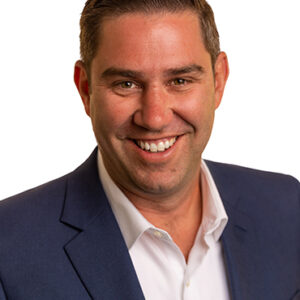Across many tax-exempt direct care and program service industries, organizations not only feel the impact of the “great resignation” through loss of front line and direct care staff, but through the long-tenured individuals with years of institutional knowledge that are beginning to make moves as well.
During the pandemic, many of these individuals felt dedicated to their organizations and compelled to weather the pandemic storm with their teams. Many held off on planned retirements due to their loyalty to the organization, and quite honestly, their organizations needed them. Now that we are navigating into more familiar territory, even if that territory is only two years old, many feel more comfortable resuming their retirement plans. Additionally, the shift in the workforce has created opportunities. Executive level individuals are using this job market to explore other options and are moving up the corporate ladder by accepting employment elsewhere, often in an entirely new industry.
Workforce retention and recruitment has caused a challenge for employers for some time now. However, the loss of an individual with vast organizational knowledge, or who has a high level of responsibility in the organization, creates additional challenges above and beyond the loss of hands to perform a task. Strategic thinking, institutional knowledge and history, and executive presence are also lost.
It is at this point that the need for a solid organizational structure that is well supported, as well as documented policies and key controls, that can be transferred regardless of who is sitting in the C-suite becomes even more important. There is no doubt that the loss of long-tenured individuals causes disruption but having mechanisms in place to keep the ship on course in the interim will alleviate some of the pressure. Additionally, the ability to transfer this institutional knowledge before it’s an emergency should be even more top of mind in your organization due to the current environment.
As you evaluate your organizational structure, ask yourself these key questions:
- Does much of the “why and how” of our organization’s processes and communication of information live in the brains of one or two individuals? Consider creating goals to transfer this knowledge to the organization as a whole.
- When you replace a long-tenured employee, often there is an opportunity to modernize and make processes more efficient with a fresh set of eyes. As you onboard new employees, encourage them to be creative and speak their mind rather than trying to recreate a process that is outdated and inefficient. Using available technology can drive innovation.
- Is there an opportunity to streamline a process or collaborate with other departments/programs to create efficiency?
- What historical information is not readily found in organizational records? How will you ensure that this vital information is appropriately maintained?
- For those long-tenured retiring employees with vast institutional knowledge, does it make sense to discuss a part-time consultant role as the organization transitions?
- How will the loss of this employee affect your organization’s morale? Many times, long- tenured employees can be the heart and soul of an organization. Pre-pandemic, organizations were much more likely to celebrate the retirement or departure of long- tenured employees. Over the past few years, this has become less common due to health concerns over gatherings and the general chaos that we have all experienced. However, showing appreciation for the service that your employees have provided is a great way to show your remaining employees that you appreciate their efforts and that your organization cares about them.
The shift (I will not say “loss” as I truly do not believe that this is all negative) of the brain bank creates challenges in any organization. The loss is not just from a knowledge perspective, but from the team’s perspective if these individuals were held in high esteem. Leverage their connection with your team to create an environment of collaboration and support as they transition either to retirement or outside of the organization.
The shift also creates incredible opportunity. If there are current employees with growth goals that are ready to take on new responsibilities, this is a way to offer them advancement. Often, when a long-tenured individual leaves, the organization has the opportunity to dive deeper into the areas that they managed, often through necessity in the transition phase. Processes and data analysis that have served the organization for years may be due for an update. Leveraging the use of new technology to streamline repeatable and manual functions will create efficiencies and reduce the strain on current employees. The transition of a long-tenured employee may be the time to create a new opportunity. It may be time to evaluate your organization’s key performance indicators (KPIs), benchmarking and other external and internal reporting as you develop new vision with your new executive. New additions to the organizations always give a fresh perspective that you can embrace.
It feels as if we cannot handle any more disruption in our organizations, but this seems to be the next trend and hurdle to overcome. You may already be aware or suspect that you will experience disruption within the next few years due to employees communicating their retirement plans. Conversely, you may be surprised when you find that a long-term employee has taken a new position elsewhere and given their notice. Dedicate some thought to evaluating the current state of your organization’s infrastructure, culture of sharing knowledge, developing people, strategic planning, and utilization of technology to best position your organization.
If you need further guidance or have any questions on this topic, we’re here to help. Please do not hesitate to reach out to our trusted experts to discuss your specific situation.




